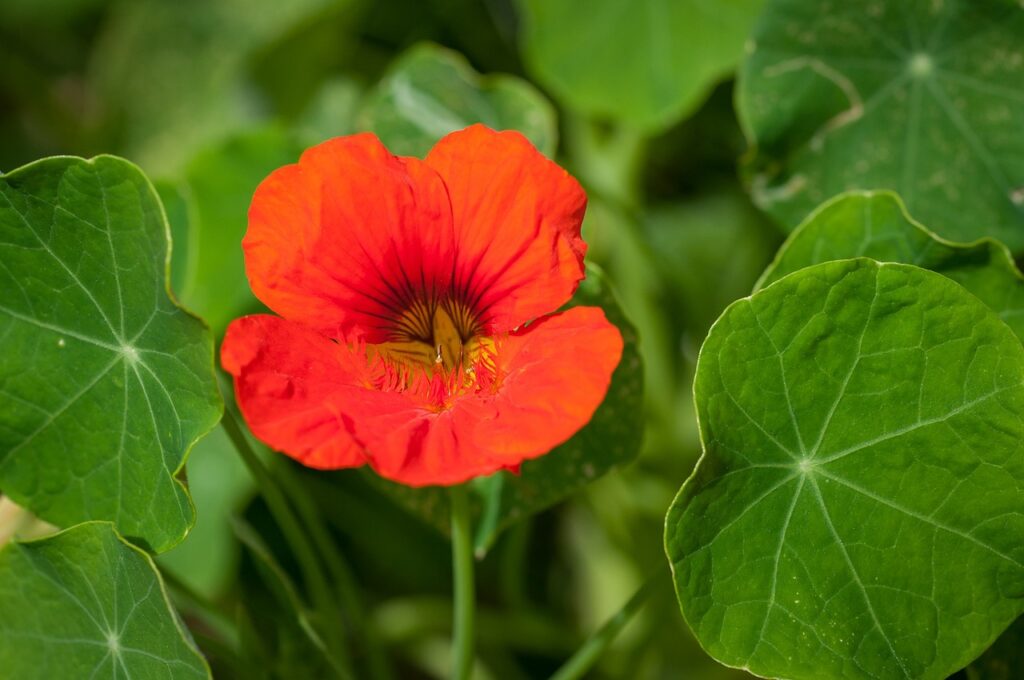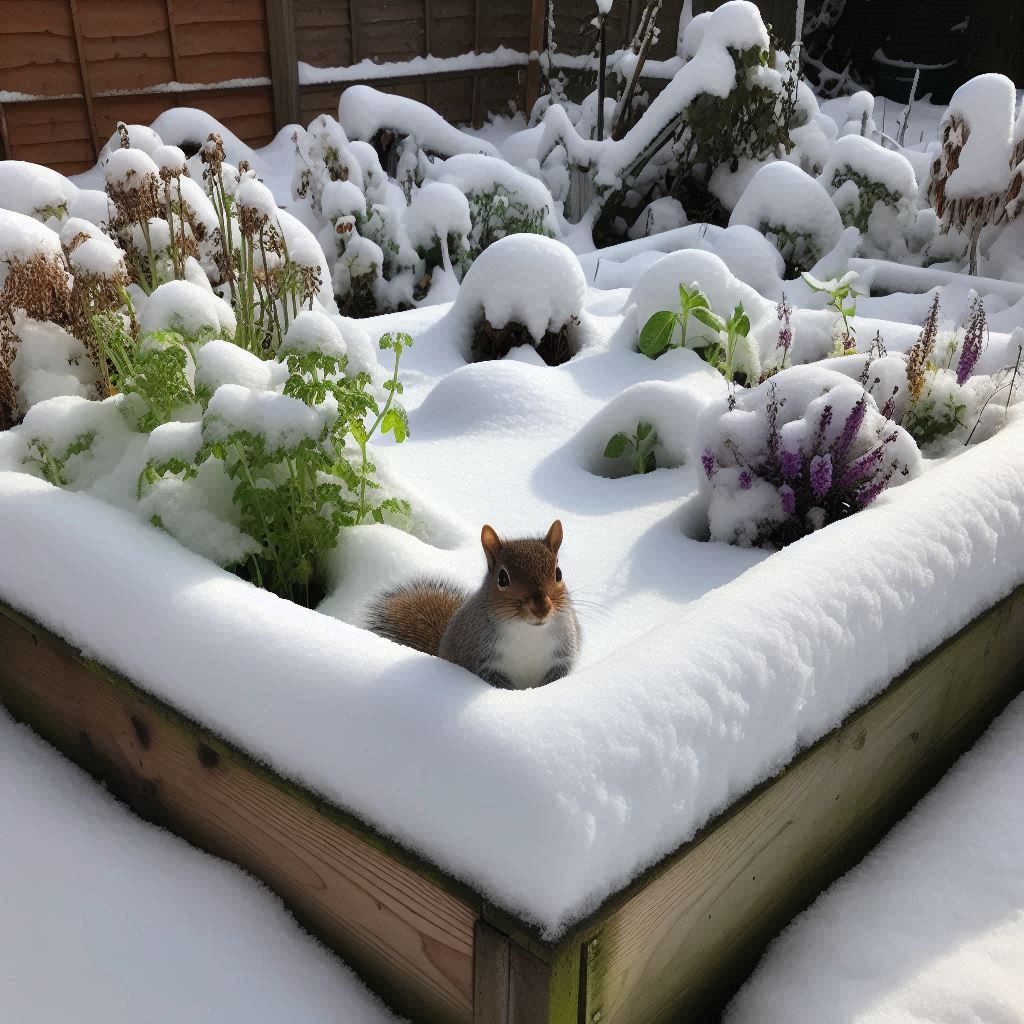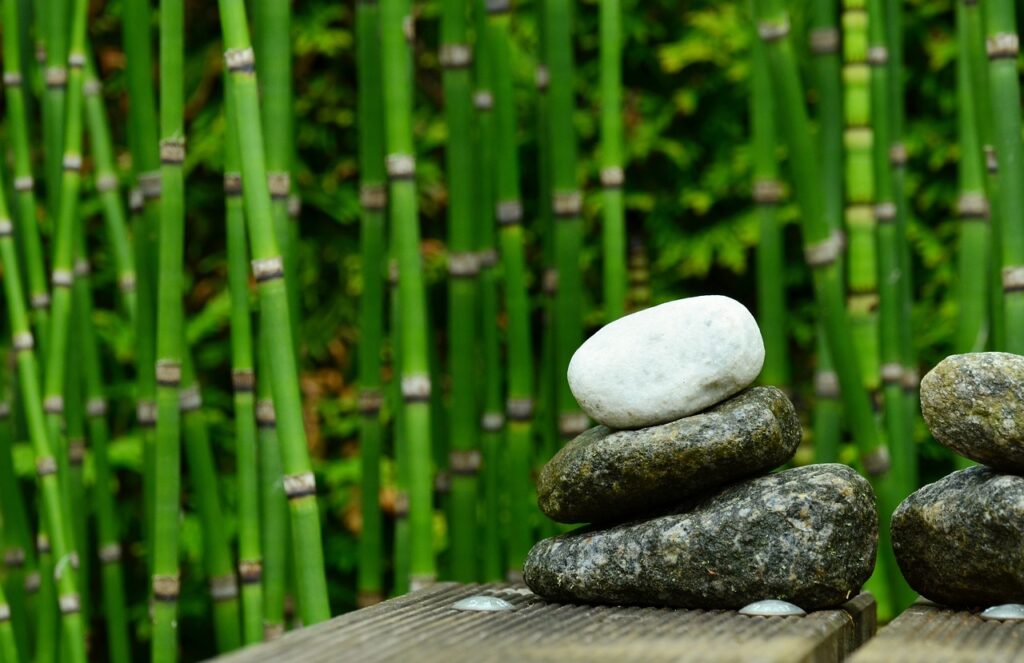Hanging baskets are a solid solution to enhance the beauty of a garden or indoor space. They make a stunning, focal point and can be used to break monotony or hide ugly walls. Using colorful and edible nasturtiums is a winning formula as you get the aesthetic benefit as well as the culinary and health rewards. In this blog, we’ll take you through some of the basics you need to know, to start growing nasturtiums in hanging baskets. From planting seeds to the best watering practices, soil types, and feeding requirements, we will cover as much as we feel you need, to grow nasturtium hanging baskets. Much of this advice would work for planting in pots and other containers too. Raised bed and container gardening have a place in any garden and once mastered, they are more than worth the effort.
As an Amazon and ebay Affiliate we may earn a commission off any purchases made through our links. This won’t affect the price you pay.
How to Grow Your Own Hanging Baskets from Seed
Growing nasturtium in hanging baskets can be initiated from seed. They are easy to do and germinate quickly. You can start them indoors 4-6 weeks before the last frost, or sow them directly into the soil and garden beds, after the frost has passed.
To start them indoors, fill a seed tray or starter pot with moist potting mix. Make a shallow hole in the center of each cell or pot, and place the seed inside, covering it lightly with soil. Keep the soil moist and warm, and the seeds will germinate in about a week.
If you’re sowing directly into the soil, choose a sunny spot with well-draining soil. Nasturtiums prefer slightly acidic soil with a pH between 6 and 7.5. Make a hole in the soil about 1 inch deep, drop the seed inside, and cover it with soil. Space the seeds about 8-12 inches apart.

Best Way to Plant Nasturtiums in a Hanging Basket
When planting nasturtiums in a hanging basket, it’s important to choose the right basket products. Look for a basket that’s at least 12 inches in diameter, as nasturtiums need space to spread out. Top tip: try trailing nasturtium for a cascading look.
Choose a good quality potting mix that contains peat moss and perlite, which will help with drainage and aeration. Fill the basket almost to the top with the potting mix, leaving about an inch of space.
Dig a small hole in the center of the soil, and place the seedling inside, covering it with soil. Water the basket well, and hang it in a sunny spot that gets at least 6 hours of direct sunlight per day.
Best Watering Practice for Nasturtium in Hanging Baskets
Nasturtiums don’t like to be overwatered, as this can lead to root rot. But at the same time, they don’t like to be too dry, as this can cause the leaves to wilt. So, where is the happy medium?
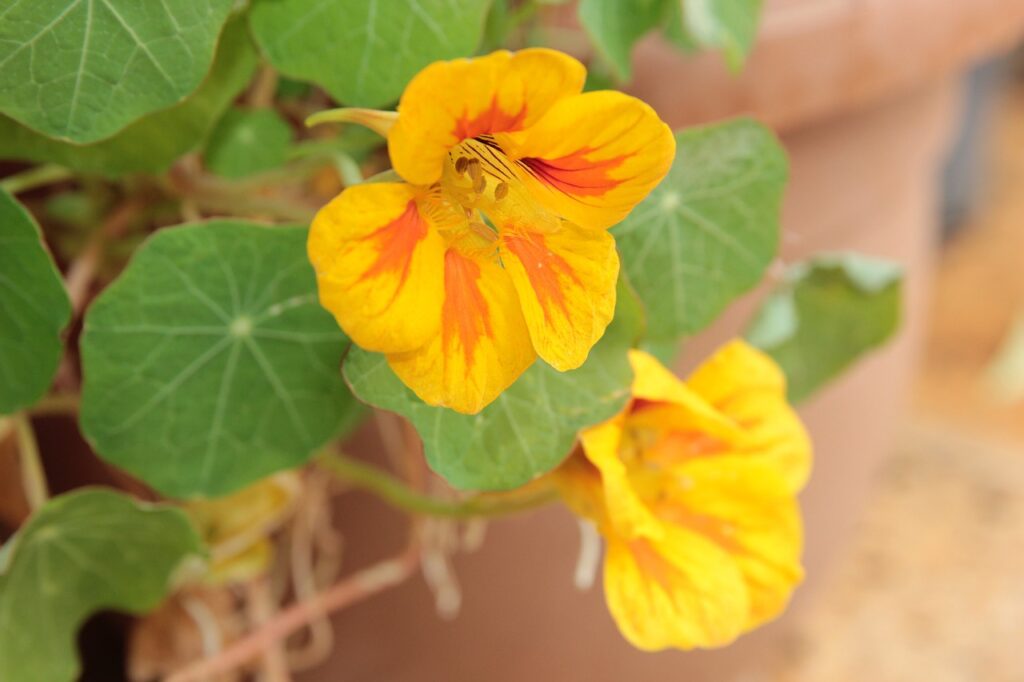
Water your nasturtium hanging basket when the top inch of soil feels dry to the touch. Water slowly and deeply, until water starts to drain out of the bottom of the basket. (I water mine over lawn or other plants. This saves water and reuses nutrients) This will ensure that the roots get enough water without drowning them.
In hot weather, you may need to water more frequently, as the soil will dry out faster. In cool weather or when it’s raining, you can reduce the watering frequency. Top tip: self watering devices are often available sale, keep an eye out.
Growing Nasturtiums in Hanging Baskets Indoors
In this section, I will cover indoor growing, for those of you who need a lift inside or perhaps have limited outdoor space
Choosing the Right Variety
When it comes to selecting the perfect nasturtium variety for your indoor hanging basket, consider factors such as size, color, and growth habit. Compact varieties like ‘Jewel Mix’ and ‘Alaska’ work exceptionally well in small spaces. These varieties typically produce an array of vibrant flowers in various shades ranging from fiery red to sunny yellow, adding a pop of color to any corner of your home. Additionally, dwarf nasturtium varieties like ‘Empress of India’ are ideal for hanging baskets due to their trailing or bush-like growth habit, providing cascades of lush green foliage and delicate blossoms.
Location and Lighting
To ensure healthy growth and abundant blooms, it is crucial to place your nasturtium hanging basket in an area that receives adequate sunlight. Ideally, locate them near a south or west-facing window, which provides sufficient natural light for at least 6 hours a day. However, if natural light is limited, you can supplement it with artificial grow lights to maintain optimal growth conditions for your indoor nasturtiums.

Soil and Container Selection
Much of this is duplication with the soil requirements when making baskets for outdoors.
A well-draining soil mix is essential for the success of your indoor nasturtiums. Choose a lightweight potting mix enriched with compost to ensure proper drainage while retaining enough moisture for healthy root development. When it comes to containers, opt for hanging baskets with sufficient drainage holes to prevent waterlogging. Hanging baskets made of natural materials like coconut coir or woven moss add an aesthetic touch to your indoor garden.
Different Types of Nasturtiums to Consider
Nasturtiums come in a variety of colors and growth habits, making them a versatile choice for hanging baskets. Here are some of the different types of nasturtiums to consider:
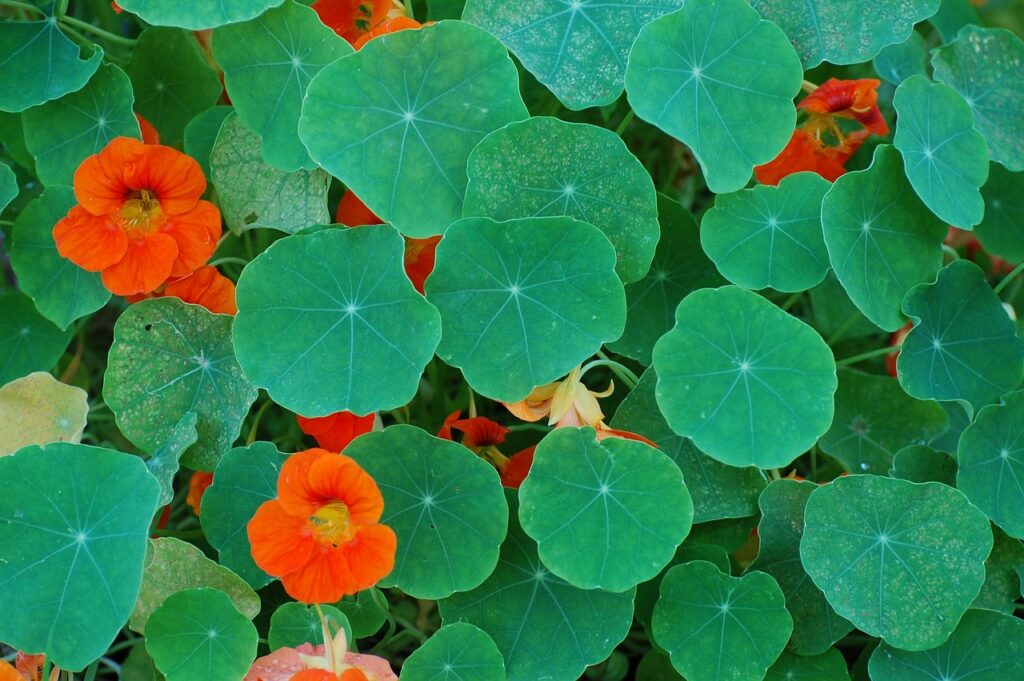
- Dwarf nasturtiums – These are compact plants that grow to about 12 inches tall, making them ideal for small hanging baskets and as a general ground cover.
- Climbing nasturtiums – These are vigorous plants that can grow up to 10 feet long, making them a good choice for hanging baskets with trellises or supports.
- Trailing nasturtiums – These plants have long, cascading stems that can grow up to 6 feet long, making them perfect for hanging baskets with a lot of space.
- Variegated nasturtiums – These have leaves with colorful variegation, adding a unique touch to any hanging basket.
Nutritional Elements of Nasturtium
Nasturtiums are not only beautiful, but they’re also edible and rich in vitamins and minerals. The leaves and flowers have a peppery taste that can be added to salad and food or used as a garnish.
Nasturtiums are also high in vitamin C, lutein, zeaxanthin, and beta-carotene. These nutrients have antioxidant properties that can help protect against cancer and heart disease.
Best Soil for Hanging Baskets
When it comes to growing plants in hanging baskets, choosing the right soil can make all the difference in their health and growth. The best soil for hanging baskets should be lightweight, well-draining, and nutrient-rich to support healthy root development and water retention.
One of the most crucial considerations when choosing soil for your hanging basket is weight. Heavy soil can drag down the basket, causing stress on the hanging mechanism and making the basket difficult to move or transport. Therefore, it’s essential to use lighter soil blends that won’t add excessive weight to your hanging basket.

Another critical factor to consider is drainage. Because hanging baskets don’t have drainage holes at the bottom, it’s necessary to use a soil blend that provides good aeration and promotes proper water drainage to prevent root rot or other damage.
The ideal soil mix for hanging baskets should include a blend of peat moss, coconut coir, perlite, and vermiculite. These components help retain moisture and provide good aeration while promoting proper drainage. They’re also lightweight, reducing stress on the basket’s hangers.
It’s also essential to choose a high-quality soil mix because cheap soil blends may contain too much sand or clay, leading to drainage issues. These subpar soil blends may also lack the necessary nutrients to support healthy plant growth.
The best soil for hanging baskets should also be slightly acidic, with a pH level between 6.0 and 7.0, to support optimum nutrient uptake and plant growth. This slightly acidic soil blend is particularly essential for acid-loving plants like ferns, petunias, and begonias.
Sun Requirements and Feeding Requirements
Nasturtiums thrive in full sun, which means they need at least 6 hours of direct sunlight per day. If you have a shaded area, choose a trailing variety, as they can tolerate some shade.
Nasturtiums are an easy-to-grow and low-maintenance plant that adds color and flavor to any garden. Feeding and fertilizing your nasturtiums can help boost their growth, promote blooming, and increase the abundance and size of their flowers.
The best time to fertilize your nasturtiums is during the growing season when they’re actively producing foliage and flowers. You can use either organic or synthetic fertilizers to feed your nasturtiums, depending on your preference.
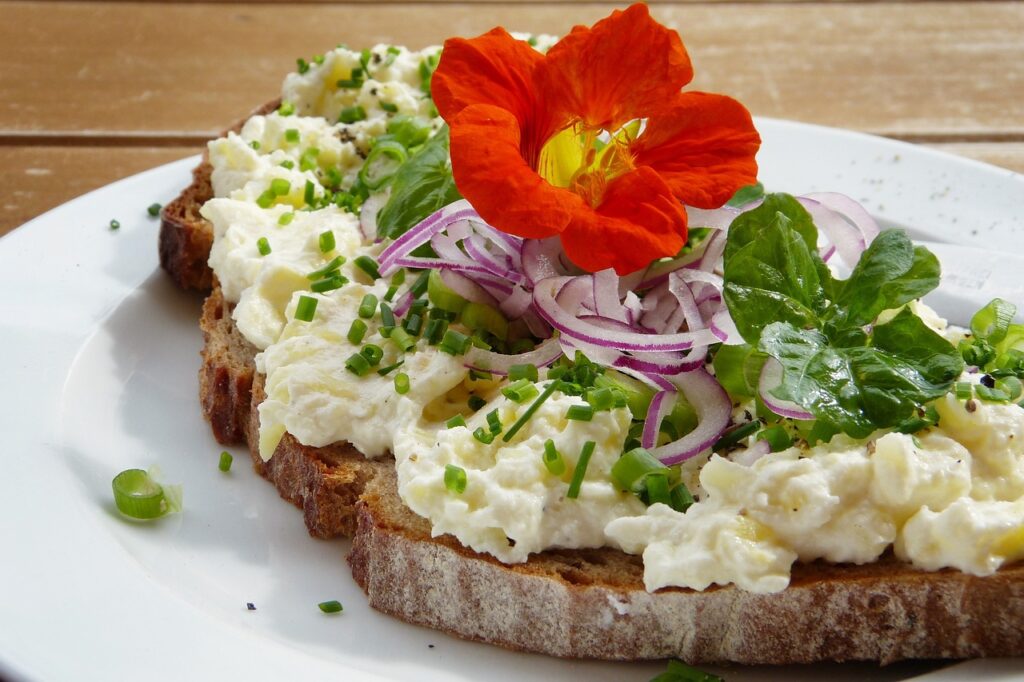
Organic fertilizers such as compost, manure, or bone meal are a great option for those who prefer natural and eco-friendly methods. These fertilizers provide essential nutrients such as nitrogen, phosphorus, and potassium that are necessary for healthy growth and development.
Synthetic fertilizers such as granular or liquid options are fast-acting and provide an immediate nutrient boost to your nasturtiums. However, they can be harmful to the environment if used in excess, and their overuse can also lead to root burn or nutrient deficiencies.
Regardless of the type of fertilizer you choose, it’s essential to follow the instructions carefully and not over-fertilize your nasturtiums. Over-fertilizing can cause excessive foliage growth at the expense of blooming, or it can even burn the roots and damage the plant.
In general, it’s best to fertilize your nasturtiums once a month during the growing season. You can apply the fertilizer directly to the soil around the base of the plant, or you can mix it with water and apply it as a foliar spray.
Pests and Diseases
While nasturtiums are generally resistant to pests and diseases, some common nuisances can still affect their growth. Keep an eye out for aphids, slugs, and caterpillars, which are attracted to nasturtium foliage and flowers. Introduce natural predators like ladybugs to control aphids or handpick pests as necessary. Ensure good air circulation and avoid overwatering to prevent fungal diseases, such as powdery mildew. Promptly address any pest or disease issues to maintain a healthy and vibrant nasturtium hanging basket.

Frequently Asked Questions and Answers
Q: Can nasturtiums grow in shade?
A: Trailing nasturtiums can tolerate some shade, but they won’t produce as many blooms as those grown in full sun.
Q: Can you overwater nasturtiums in a hanging basket?
A: Yes, overwatering can lead to root rot and other problems. Only water when the top layer of soil an inch or so) feels dry to the touch.
Q: Do nasturtiums need to be deadheaded?
A: Deadheading can encourage more blooms, but it’s not necessary. You can also leave the spent blooms on the plant for a decorative look.
Q: Can you harvest nasturtiums for eating?
A: Yes, the leaves and flowers are edible and have a peppery taste that can be added to salads or used as a garnish.
Nasturtiums, overall, are an excellent choice for hanging baskets, as they’re easy to grow, beautiful, edible, and usually don’t come at a heavy price. Follow the tips and guidelines in this blog to grow your own hanging basket of nasturtiums. It’s a delight to enjoy their vibrant blooms and delicious flavor all season long.

As an Amazon and ebay Affiliate we may earn a commission off any purchases made through our links. This won’t affect the price you pay.
